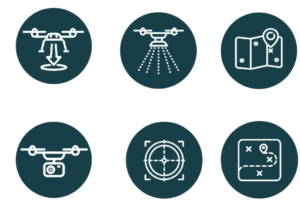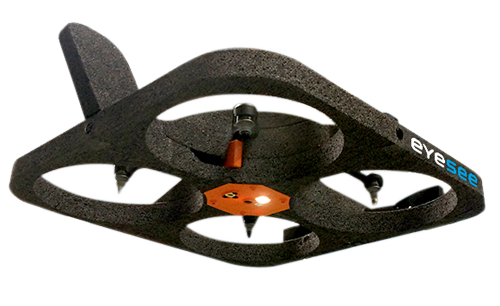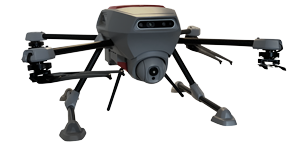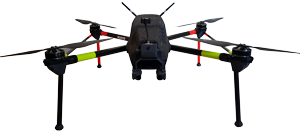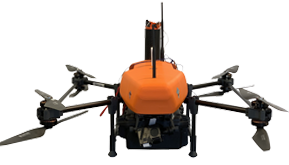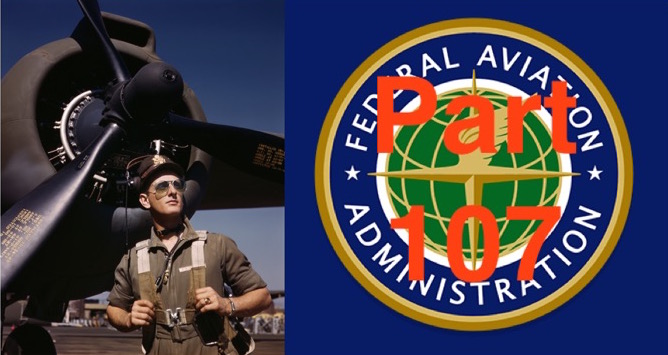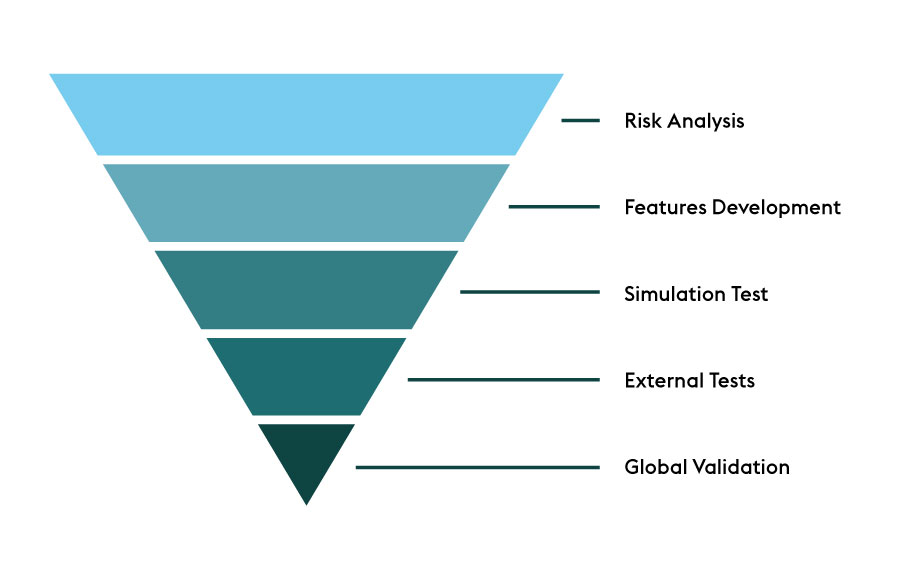You’re probably wondering what drone technologies are on the market, what they’re used for, and which ones are going to come out in full force in 2021, we reveal everything.
What drone technologies are available on the professional drone market today?
Communication technologies:
In a logic of long-distance communication and redundancy of communication and control technologies, drones are equipped with 3G and 4G capabilities allowing them to communicate at varying speeds on operators’ networks worldwide. These redundancies are imperative for some flight authorizations. They allow to pilot and control a drone remotely. Thanks to these technologies, drones can now fly regardless of the position of the remote pilot. The position and evolution of the drone are transmitted in real time and the remote pilot can intervene on the sensors and the flight plan.
The Bluetooth integrated on the drones allows low power communications. At Squadrone System, we integrate high quality modems to ensure quality communications. The sensors integrated on our drones can communicate with the drone or to the ground via Bluetooth. For example, some sensors on board the drones communicate with the onboard computer (also on board) via Bluetooth. This makes integration sometimes easier and avoids internal manipulations.
The wifi integrated on the drones allows tracking, communication with the drone and the transfer of high quality video streams at long distance. Squadrone System integrates high quality modems to increase the range of its drones. Did you know that we can communicate by wifi at several kilometers distance?
Optical sensors:
Among the drone technologies, we find optical sensors that play an essential role in the analysis of the flight environment.
LIDAR (light detection and ranging) technology is particularly interesting in both indoor and outdoor environments. Using ToF (Time of Flight) methods, LIDAR can generate hundreds of thousands of points with a high refresh rate to map and model complex environments. LIDAR technology uses sensors that emit laser beams that descend to the ground and bounce back. The distance between the laser and the sensor is then measured and recorded.
SONAR (Sound Navigation Ranging) is a technique that, like LIDAR, measures the propagation time of waves to measure distances. This light and efficient technology can be used to understand the environment in which the drone evolves even in poor lighting conditions. However, in this case it is sound waves and not lasers.
Location technologies :
The GPS technology allows a localization on the whole surface of the globe, on land and on sea. This technology allows a localization with a precision of a few meters. This makes it possible to automate drone flights without carrying out high-precision missions. RTK can reach an accuracy on the ground of a few centimeters, which can be very important in some areas, including agriculture.
Squadrone System also uses the GPS RTK system: Real Time Kinematic. This device allows the transmission of real-time correction data from an observation base to mobile GPS. The mobile will then integrate this information into its positioning calculation to gain accuracy. We can then reach a centimetric precision.
Finally, among the location technologies we find the UWB technology: Ultra wide band. This is particularly interesting in indoor environments. It is a data transmission technology using techniques that cause a spread of radio energy over a very wide frequency band, with a very low power spectral density. It is weakly impacted by the interferences of the other frequencies of communications. Indeed its spectrum and its signal are radically different from other radio technologies. which gives it many advantages. Moreover, it is not for nothing that the latest Apple iPhones integrate the UWB for localization.
Data recovery technologies
The RFID (Radio Frequency Identification) technology allows to recover information without contact. Used in particular in industrial traceability, the technology is of great interest associated with drones incorporating a reader. Squadrone System controls the integration and calibration necessary for the manufacture of RFID drone.
All the technologies mentioned are very important especially in terms of security and communication. Thus, reliable technologies can ensure the safety of people and have a total and continuous control over the drones.
What drone technologies have the most potential?
The RFID reader and the barcode reader are certainly the technologies that we will hear the most about in 2021. RFID technology is attracting a lot of interest in various fields such as environment, security, surveillance, transportation, etc… 2020 has allowed us to identify major trends for drones in 2021.
The RFID drone has proven itself: inventory in port environments, raw materials or first indoor experiments. RFID technology continues to surprise us and will arrive in force in 2021 with new use cases.
This was the subject of one of our webinars, don’t hesitate to watch the replay.
AI: artificial intelligence is also coming in full force in 2021. AI offers drones new capabilities that go beyond simple aerial imaging. The applications of AI associated with a drone are multiple: detection, identification, geolocation of objects, alerts/tracking of objects.
You have a technology that you want to integrate on a drone for professional use, but you have not found it here? Tell us more, our teams can help you.
